
Criminal law is the law component that explains criminal offenses, offers regulations for apprehension, charges, and trials of suspected persons, and fixes the penalties and treatment(s) of those convicted. Criminal law books will usually depict themes that surround crime and justice.
Like a criminal law book, a criminal procedure book will usually center its development around issues of crime, the actively involved parties, and the necessary procedures taken. To help you navigate this exciting world of criminal law, we have put together a list of books to offer you different views and vital information.
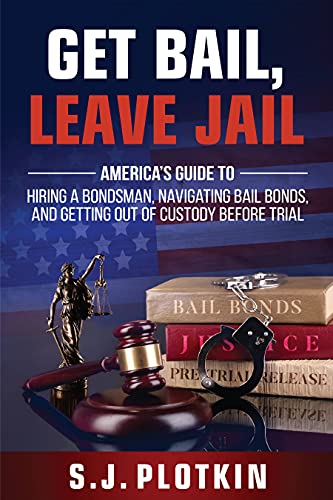
Get Bail, by Leave Jail, S.J. Plotkin
Whenever you or a loved one is imprisoned, the priority is usually to secure a safe release as fast as you can, which can become very overwhelming. You can rush and possibly make bad decisions based on inadequate or wrong information and such decisions can have grave and long-term implications.
Getting arrested is difficult. Whether it’s due to a traffic ticket, domestic violence, the possession of drugs, or whatever form you are charged with. However, those that get released on bail are usually better prepared. They have more time, a variety of options and can also seek significant help. You need to know such information just in case you or those you care about may need it.
This book helps you learn the safe way to navigate arrests, bail, legal accusations, and even the most complex of court proceedings. The author‘s guidance originates from more than six decades of family proficiency in bail, working with many needy people, a massive number of criminal defense lawyers, all sorts of law enforcement(s), and court officers.
As you read along, you will be provided with advice that regards to;
- The five kinds of bail agencies you may encounter and how to be informed about their reputations and qualifications.
- The necessary information you need to gather from a bond dealer or a bail agent before you hire them.
- The ways through which being released can be delayed and avoided.
- Five methods to fasten release and get out of jail.
- The most common contacts and bail bond forms you may be faced with.
- How to go through criminal court procedures, and how to ensure that your bail bond is exonerated.
- Actions to take when getting ready for a court defense, sentence reduction, and how you can entirely stay out of prison.
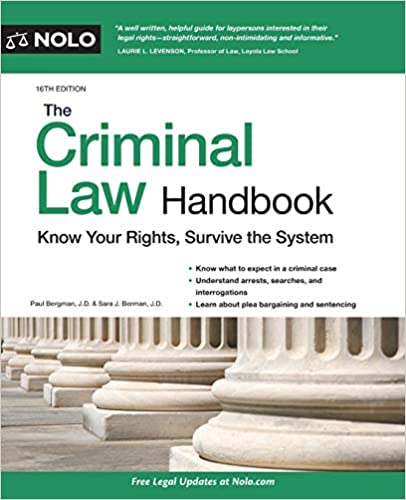
The Criminal Law Handbook, by Paul Bergman J.D & Sara Berman
The criminal justice system is very complicated, and that is why you need to fully understand it and what your rights are. The Criminal Law Handbook clarifies the complexity of the rules and procedures of this field. It will give you information about how the system works and why the parties involved do what they do; the police, lawyers, and judges. It also highlights what suspects, defendants, and those imprisoned can expect and what you need to generally and deeply know when working with a lawyer.
The message this book passes is that it is very critical to know your rights as you speak to the police. You need to beware of your most important right and what the right to remain silent means. Silence is essential since if you don’t speak, they cannot use it against you. You only need to provide information about what you are needed to answer, like your name, address details, date of birth, and driver’s license data.
If you are asked to provide any other information, you need to put the process to a halt and ask if you are an investigation subject. If it is confirmed that you are, you need to invoke the right to stay silent and inform the police that you will not be speaking further without an attorney’s representation. This book will guide you about what to do if requested to come in and provide answers when you are not the victim.
The book also offers a detailed explanation of the prosecution process- bail, trials, bargaining for a plea, and sentencing. You will also be enlightened about arraignments, common defenses, juvenile courts, preliminary hearings, constitutional rights, appeals, and a lot more. It is a book that simplifies some of the most complex and challenging concepts of the criminal justice system, and they are all well written.
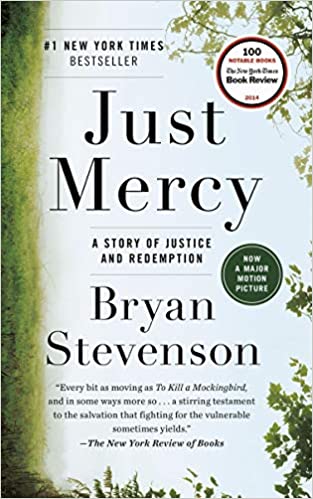
Just Mercy, by Bryan Stevenson
Written by one of the most influential and brilliant lawyers, Just Mercy is a powerful and true story highlighting redemption through mercy, equality, and a call to fix the broken justice system. This book will change your perception and notion about how you view the justice system, legal proceedings, and death row cases. It will help you part with some of the long-held opinions or beliefs you have had.
Through the storyline, the book depicts that there is a lot of worldly injustice and that there are also chances for mercy even in unexpected situations. It highlights that there should always be a reason to look into people’s circumstances prior to condemnation. Even the court and juries can get it wrong more often than we may not think. This can happen even in consideration of overwhelming evidence to the opposite. The jury may side with witnesses who have been influenced to say different things by law enforcement. You will see how difficult it is to reverse a death row for an innocent person after they are pronounced guilty.
Just Mercy offers a fascinating insight into death row cases and the demographics involved. There are people on death row that are sometimes wholly innocent. It advocates for Equal Justice Initiatives and will make aspiring lawyers want to make a difference even more. It is an eye-opener that sometimes when it comes to justice, we loathe situations like corruption in other societies, which are even more prevalent in our society.
It will help you see that crooked cops, unfit public defenders, and courts choose to ignore the truth. This all results in wrongful death sentences and incarceration. The law may recklessly dictate execution even after one’s innocence is proven due to corruption and overall ignorance.
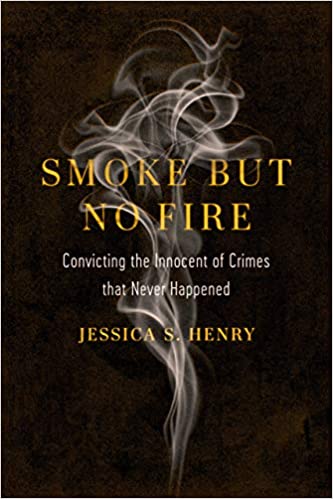
Smoke but No Fire, by Jessica S. Henry
Jessica sheds light on how a very flawed justice system can allow or even encourage the occurrence of regular convictions. This is a book that explores a shocking but very pervasive form of wrongful conviction. The kind that locks up innocent people for crimes that did not actually happen. It illustrates that a third of known exonerations result from non-crime and wrongful convictions.
The cases have forensic errors, false accusations, and planted evidence, which are critical initiators of the wrongful conviction(s). What is even more outrageous is that the system does not respond accordingly. Each party involved in the entire process is explored, and the policies that create favorable environments that encourage misdemeanor arrests are well illustrated.
You will see how suicide can be falsely labeled a homicide. How an accidental fire is incorrectly labeled arson and how corrupt police may plant drugs on an innocent person. In the book, a false allegation of assault is made up to resolve a dispute of custody. The book will broaden your mind and open your eyes to see the chilling reality that many innocent people are imprisoned for imaginary crimes with dire consequences. It is very informative for anyone who is passionate about or cares about the criminal justice system’s integrity- legal professionals, activists, students, and members of the general public.
In the final chapter, there are suggestions on how these tragic convictions can be reduced. This is excellent input for everyone to work towards reforming and improving any broken justice systems. Smoke but No Fire is well written, fascinating, and unravels some of the most overlooked crime and justice issues. These injustices are viewed as seemingly impossible but, they can still happen.
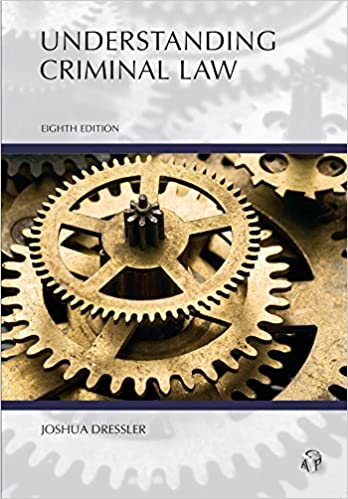
Understanding Criminal Law, by Joshua Dressler
A breakdown of criminal law is how best this book can be described. Understanding Criminal Law is a must-read for anyone interested in criminal law and, more particularly, students. It covers critical topics and analyzes substantial aspects of the field. There are fundamental elements of all kinds of crimes and defense. There is also in-depth coverage of the crimes themselves- rape, theft, homicide, and a lot more. Essential topics about accomplices and inchoate liability are also well explained.
Get to learn about the theories of punishment, origins of the criminal law, and other dominating principles such as proportionality and legality. The author has also focused on highlighting and bringing to light significant updates of the field; it covers the rapidly changing legal areas like self-defense and sexual assault law. Every concept is explained simply and would be helpful for any criminal law student.
What makes this book even better is that in addition to all the information about criminal law, it has a section with a reference list to other articles and books that you can use to gain more knowledge. The Model Penal Code has been excellently delineated from common law. Furthermore, the most recent and current revisions to the Model Penal Code have also been discussed.
If you need to survive criminal law, you must get yourself this handbook. Many scholars and courts frequently cite this book as they analyze substantive criminal law. This is what makes it an essential supplementary source of assistance for students. Every topic covered will often be raised in a criminal law case book. Every subject is also meant to complement criminal law class discussions.
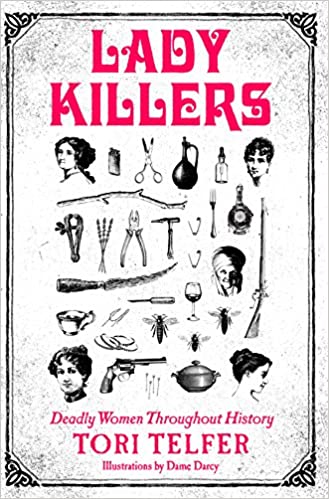
Lady Killers, by Tori Telfer
The narrative was always that women are primarily victims and not the perpetrators of violent crimes and that serial killers are universally male. However, the debut of this book brought us a different dimension and view. The book disputes this claim with fourteen examples to serve us with evidence. The chapters illustrate the crimes and history of various female serial killers from different parts of the world- the US, Egypt, Russia, and France. Additionally, each chapter unpacks each of their legacy, stereotyping, sexist narratives, and media portrayal.
Lady Killers examines female serial killers in a humorous tone. It has dismissed the straightforward explanations that women commit a crime triggered by hormones, because they are in love or are forced into it by a man. The women in the book are driven by aggression and predation too. The book depicts women from all walks of life, and this gives a good account of the most notorious of them, their crimes, and their sentences.
You will immensely enjoy this book from a historical and criminal point of view. It will have you engrossed as you wonder if the next person may be worse than the last. It is proof that all things equal, even female serial killers can be as scheming and sociopathic as men. Some of these women killed step-children and unwanted children.
Lady Killers is a lesson that crime is not gender-based. We, therefore, shouldn’t pretend like female serial killers do not exist or approve of such crimes simply because a woman commits them. Action needs to be taken in a fair way for justice to be served.
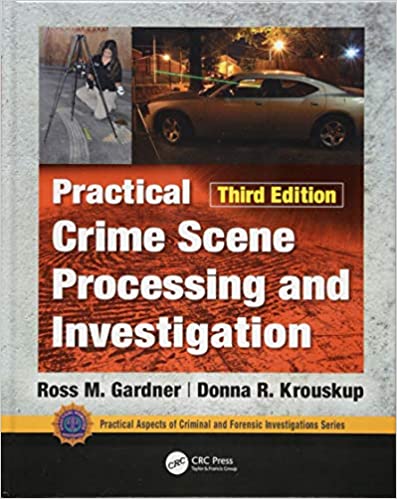
Practical Crime Scene Processing and Investigation, by Ross M. Gardner & Donna R. Krouskup
This is an excellent book for those who specialize in criminal proceedings. Any crime scene investigator acts with an underlying purpose or reason; to recover the evidence and capture the scene’s context. Therefore, these investigators need to fully understand their mandate. Not just because it is an essential component of their job but also because it is their duty and responsibility.
The book gives the essential tools about all that crime scene investigators need to know, the actions they need to take, and how to perform those actions. They must know that their master is only the truth and that this mandate calls for professional ethics. Suppose investigators can seek, gather, and preserve information accordingly and effectively, without any different agenda other than finding out the truth. In that case, they are doing their job and increasing the likelihood of justice being served.
The book has rich illustrations with figures and color photographs to mimic an actual situation an investigator may face. These will help in contexts such as;
- Fully understanding the nature of physically presented evidence like fingerprints, hair, fiber, biological and other types of such evidence.
- Scene assessment with the inclusion of search considerations and how to deal with bioterror or chemical hazards.
- Photography of the crime scene- mapping, sketching, and official documentation.
- Pattern analysis of bloodstains and how to discuss the body as a component of a crime.
- The importance of a crime scene analysis and its reconstruction.
Additionally, the book outlines the roles of the responding officer in documentation, provision of emergency care, and security of the initial information. Some chapters discuss light technology, the processing techniques that may be involved, castings, and fingerprint recovery.
All this information has been provided for the evidence to be preserved and for it to be persuasive and admissible in a court of law.
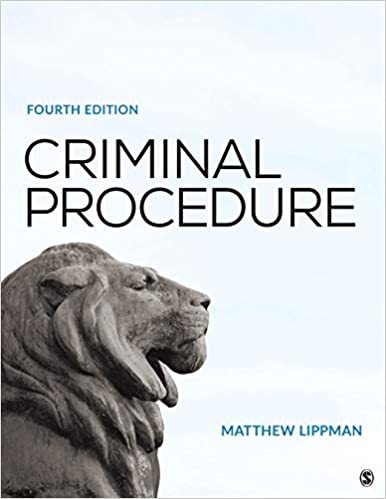
Criminal Procedure, by Matthew Lippman
The fourth edition of Criminal Procedure covers the constitutional basis of criminal procedure and cases chosen for appeal. It is put together around the dilemma of balancing between liberties and rights. The book also puts an emphasis on diversity and how it generally impacts law enforcement. To help learners master new concepts, the author has incorporated learning aids such as Legal Equations, News features, and You Decide scenarios.
The author has gone further and thrown in critical updates regarding today’s legal decisions and developments. The beginning of each chapter features Test Your Knowledge questions for students to activate their knowledge before learning about topics they do not know about yet. There are also edited cases that have clear and accessible details for the provision of concrete illustrations. These also reveal actual documents that have affected the American criminal justice system. The questions that follow these cases are great insights in helping students learn and uncover critical pointers.
There is a chapter that combines the legal terminologies with a corresponding glossary for the mastering of all the jargon of criminal justice. Some cases clearly illustrate the critical issues regarding racial discrimination, privacy, plea bargains, counsel assistance, pretrial actions, and the exclusionary rule. Crucial topics such as the use of deadly force by the police, gun control, bail rights for a defendant, bias based on race, jury deliberations, the second amendment, and many more are also well detailed. Topics that impact criminal procedures such as technology, patterns and trends, and the use of body cameras have also been added. In this book, you will also get to learn about all that pertains to the detention of undocumented individuals.
Final Thoughts
Criminal law and criminal procedure books are crucial, and they help us understand the critical aspects of crime, the law, and justice. They are very enlightening about issues we may not be familiar with. If you are a crime and justice enthusiast, then our list’s books will offer you great insights.
